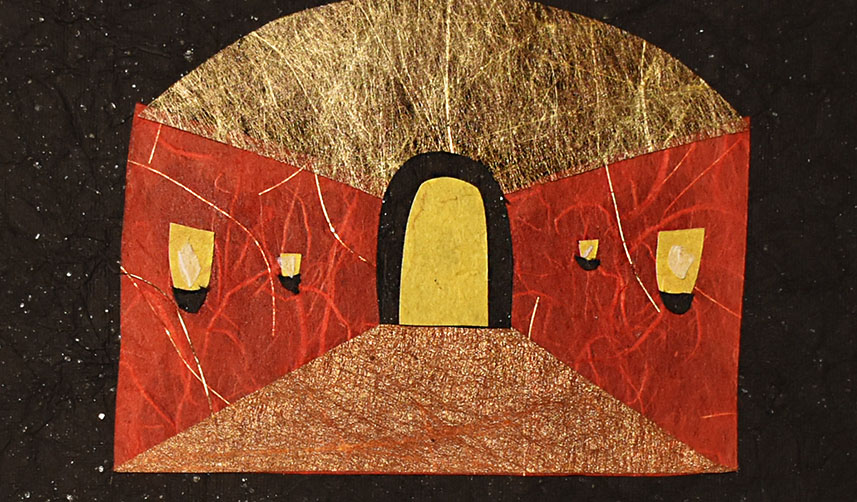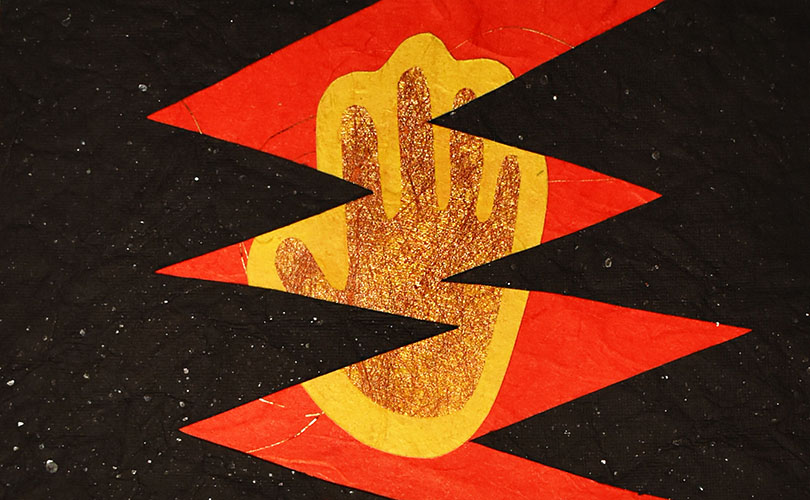On a bright sunny day with a clear blue sky and a gentle breeze ruffling the fronds of the palm trees lining the parks and gardens, Cordoba looks the picture-perfect tourist destination. Visitors usually head straight for the Mezquita, a sprawling mosque/cathedral complex that showcases an extraordinary array of Islamic, late Renaissance and Spanish Baroque architecture. It sits in the center of a maze of streets, alleys, and tiny squares forming an area that first housed the city’s original Muslim Arab population and then the Jewish diaspora that arrived during the Middle Ages. Next to see is the starkly beautiful Alcazar de los Reyes Cristianos, built on the site of a palace formerly inhabited by the Caliphate of Cordoba. When the Christians came to Cordoba in the 13th century, they brought their religion, customs and then rule by Queen Isabella and King Ferdinand II during the 15th century. Their reign included using the Alcazar as a base for the permanent tribunal that became known around the world as the Spanish Inquisition.
Tucked away in one of those charming side streets between the two major sites is the Galería de Inquisición, a small private museum exhibiting the various torture devices developed and implemented by the Spanish judicial system from the 13th to the 19th century. The museum was opened with the aim of making people aware of the brutality and cruelty inflicted on innocent European citizens during the Spanish Inquisition, in comparison to the level of human rights and individual freedoms in the contemporary era.
The entry is fairly plain. A dimly lit corridor decorated with information panels and innocuous items leads to a non-descript doorway at the end. Once inside, the gimmicky, almost amateur décor with red crepe paper lit by yellow lights to represent flames, suggests visitors are in for a fun, if somewhat, kitsch experience. That feeling, however, doesn’t last very long.

Copies of devices such as The Wheel and the Spiked Chair often featured in horror films are on display, only these ones, unlike their celluloid cousins, are real and were designed to maim and kill rather than to entertain. Apparatus like the Heretic’s Fork were fitted around the head to force a victim to renounce their beliefs. It gets its name from the double-ended fork set vertically onto a brace. This arrangement enables one end to pierce the flesh under the chin and the other to puncture the top of the chest. If the wearer did not say “I recant,” they would be burned at the stake. A model of The Head Crusher is displayed against another wall, complete with highly descriptive pencil sketches. The name says it all really, nonetheless the museum organizers saw fit to carefully explain the precise manner in which it functioned, and in five languages.
More chilling and definitely not for the faint-hearted are the contraptions used on women, in particular, to control and oppress. First, are Branks, popular from the 16th to the 19th centuries. They functioned to silence those who protested, against the church or the patriarchy, and those who scolded men. Fantastic and almost carnival looking iron masks were placed over the head of the accused. Sharp spikes and blades attached level with the opening for the mouth would be forced into the wearer’s own mouth, piercing the tongue, leaving them permanently mutilated. Branks were often used to teach women a lesson, so they knew their place. Just in case the mask didn’t get the message across clearly enough, the wearer would also be staked out in a public place wearing the Branks. Along with the suffering caused by having their mouth mutilated, they were usually doused in feces and urine and physically attacked, ensuring few if any of the victims survived.
The origin of the name branks is uncertain, but the word is believed to date back to the 16th century. It’s suggested that it’s derived from the Middle English word barnacle, the name given to a bit used to constrain a horse. Similar terms such as bernak and bernac were also in use at the same time denoting the same item. Whatever the exact provenance of the word branks, it’s telling that an instrument used to curb women has a connection with animal husbandry.
Just as significant, and also sinister, is the use of sobriquets commonly associated with women or female activities, for items used to torture and ultimately kill them. A coffin-shaped box lined with metal spikes that enter the skin once the cabinet is closed is called The Iron Maiden. The impact of the brute force of the metal combined with the idea of a woman of unarguable virtue results in an unexpected irony. If the woman were indeed a maiden, it’s unlikely she’d be put in this device named after her. Whether this torture chamber, believed to have been first constructed in Nuremberg around the 14th century, was actually used during the Inquisition is up for debate. The misogynistic intention of the nomenclature is not.
The Shrew’s Fiddle was shaped like a large wearable violin which is what was intended. Designed to both torture and demean the wearer, the head went through the larger hole and the arms through two smaller holes. The person was unable to move freely and would be paraded through the town, their humiliation easy for all to see and take advantage of. Etymologically, the word shrew, meaning “person given to railing,” referred to men in the 8th century but by the 14th century, the word shrew was solely reserved for women.

A large pyramid-shaped device, big enough for a victim to sit astride it, with the point inserted into one or other of their orifices (if a woman), is named the Judas Cradle. The torturer could maneuver them by their legs, pulling them down or turning them around on the point. The punishment could last hours or even days, depending on how long it took the victim to recant or die. Linking the betrayer of Christ with a child’s bed to name an atrocious instrument of torture defies understanding. Unless one is a man accused of homosexual acts, or a woman, and have no choice but to engage.
By this stage in my walk around the museum, the crass jokes being made by a young American college student visiting with a party of female friends, grate relentlessly on my nerves. He’s oblivious to the nervous titters of the young women he’s with. He gleefully draws their attention to gruesome devices, ignorant of their obvious horror at what they see. I can tell from their faces they can easily imagine the suffering a woman would undergo when being tortured by one of the malignant devices on display. Can imagine themselves as that woman.
Especially when it comes to the Pear of Anguish. Think of something like a speculum that was inserted into the mouth, vagina or anus. Only this one has spikes on it and no stop button to regulate how wide it could stretch. It was applied to so-called “heretics” as well as passive homosexuals and women guilty of fornicating with the devil. I can still feel the way the bottom dropped out of my stomach when I saw this last exhibit. My vision blurred and my whole body swayed as though overcome with nausea. It left me reeling and I remember thinking if that uncouth man-boy made one more unseemly, inappropriate, sexist crack I’d crack him one over the head. See how he liked it. Luckily for him, and me too in retrospect, I caught the eye of an older man on the way out. I was almost inarticulate as I tried to share my rage. Somehow I managed to stammer out a comment I’ve since forgotten and he replied,
“I came here years ago. This visit, I made my daughters come here first before they go off to see anything else. Whenever they marvel over something created by the church, I want them to remember this.”
Until that moment I’d been wondering why I came to the Galería de Inquisición in the first place and why it was even allowed to exist. It’s easy when you travel to view history as something separate from yourself, as something over and done with, with no personal meaning. That way there’s no need to really engage and think about what we see and what messages we can take away with us. However, when I left, the visceral impact of the displays remained with me. The items on display were no longer mere artifacts. They represented the fear, skin, and lifeblood of those that died because of them.

The Spanish Inquisition was officially established in 1478 by King Ferdinand II to replace the Medieval Inquisition that began in the 12th century. Both inquiries sought to root out anyone they saw as a threat to the legitimacy of the Roman Catholic Church. The difference in Spain and all its colonies and territories where the Inquisition was enacted, was that the crown controlled the tribunals where heretics were tried and punished, rather than the church. Initially, Jews were targeted, but when Spain conquered Granada in the late 15th century, Muslims were added to the list. By the time the Inquisition was formally abolished nearly 700 years later, women, homosexuals and anyone who dared speak out against the church or those in authority had been added to the list of people to be identified, hunted down, and silenced.
Despite the desire of the founders that the Galería de Inquisición in Cordoba serve as a reminder of how far we’ve come in terms of our unalienable rights as human beings, for women and others protesting government decrees in many countries around the world right now, this type of past has never really gone away. Extraordinarily awful as it is, places like this museum are necessary. They remind us that unless we’re vigilant about the past, there’s every chance it could become our normative present. •




